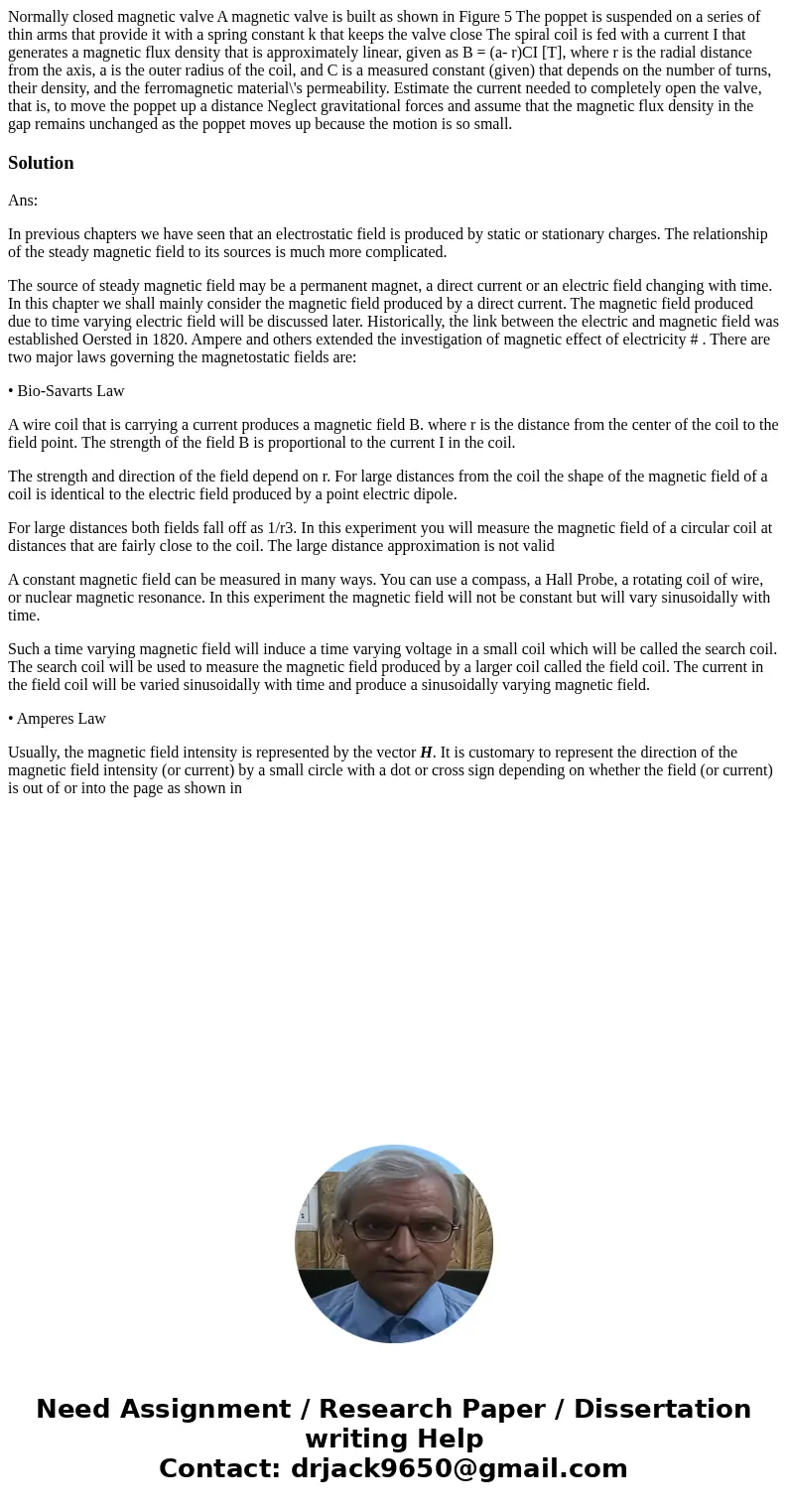Normally closed magnetic valve A magnetic valve is built as
Solution
Ans:
In previous chapters we have seen that an electrostatic field is produced by static or stationary charges. The relationship of the steady magnetic field to its sources is much more complicated.
The source of steady magnetic field may be a permanent magnet, a direct current or an electric field changing with time. In this chapter we shall mainly consider the magnetic field produced by a direct current. The magnetic field produced due to time varying electric field will be discussed later. Historically, the link between the electric and magnetic field was established Oersted in 1820. Ampere and others extended the investigation of magnetic effect of electricity # . There are two major laws governing the magnetostatic fields are:
• Bio-Savarts Law
A wire coil that is carrying a current produces a magnetic field B. where r is the distance from the center of the coil to the field point. The strength of the field B is proportional to the current I in the coil.
The strength and direction of the field depend on r. For large distances from the coil the shape of the magnetic field of a coil is identical to the electric field produced by a point electric dipole.
For large distances both fields fall off as 1/r3. In this experiment you will measure the magnetic field of a circular coil at distances that are fairly close to the coil. The large distance approximation is not valid
A constant magnetic field can be measured in many ways. You can use a compass, a Hall Probe, a rotating coil of wire, or nuclear magnetic resonance. In this experiment the magnetic field will not be constant but will vary sinusoidally with time.
Such a time varying magnetic field will induce a time varying voltage in a small coil which will be called the search coil. The search coil will be used to measure the magnetic field produced by a larger coil called the field coil. The current in the field coil will be varied sinusoidally with time and produce a sinusoidally varying magnetic field.
• Amperes Law
Usually, the magnetic field intensity is represented by the vector H. It is customary to represent the direction of the magnetic field intensity (or current) by a small circle with a dot or cross sign depending on whether the field (or current) is out of or into the page as shown in

 Homework Sourse
Homework Sourse